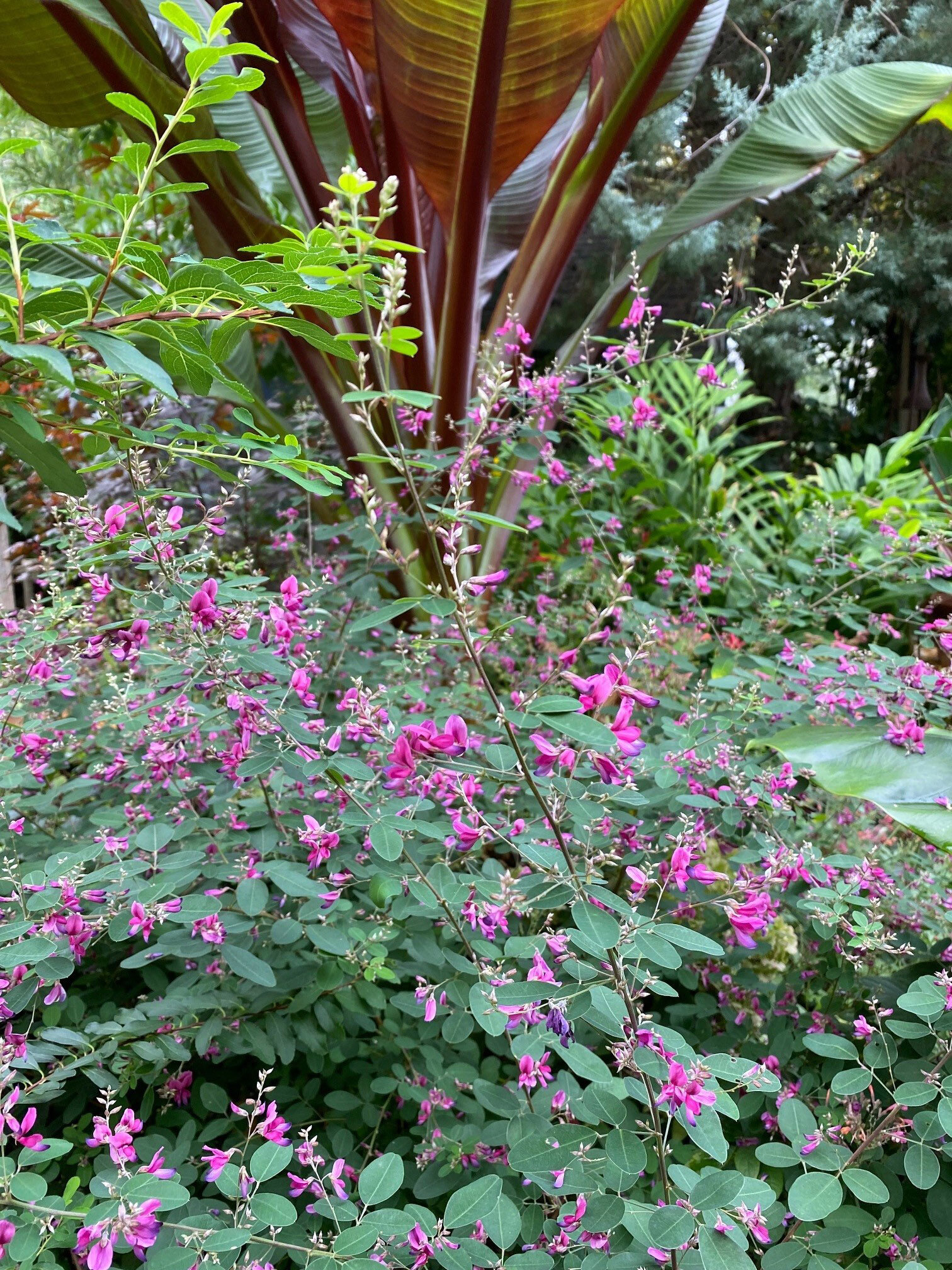Fall Blooming Perennials
In the Garden with Andrew
Andrew Bunting. Photo courtesy of the Pennsylvania Horticultural Society.
October is one of my favorite times of the year in the garden. Many annuals and tropical plants are at their peak brilliance and will look great right up to the first significant frost. And their displays are often enhanced because they are surrounded by a myriad of fall blooming perennials—which are just coming into flower now.
There are no more iconic fall-flowering perennials than the asters. There are dozens of species and cultivars that have an abundance of flowers, ranging from white to blue to pink. Recently, I saw plantings of two of my old favorites. The Tatarian aster, Aster tataricus, is robust-growing and quickly expands to large masses in the garden. (In fact, gardeners should be aware that it can grow aggressively.) It has an amazing abundance of stout stems that reach six feet tall and are covered in small, daisy-like lavender flowers with a yellow center. ‘Jindai’ is a more diminutive form. On a recent visit to the Scott Arboretum, I was reacquainted with an old favorite selection of the New England aster, Symphyotrichum novae-angliae ‘Andenken an Alma Potschke’. At maturity it reaches three to five feet tall. It has a bushy habit and is covered in flowers that are cerise with a yellow center.
The hardy Begonia grandis. Photo:Andrew Bunting
An exotic-looking addition to the fall garden are the toad lilies, Tricyrtis. Tricyrtis hirta is the common toad lily with upward-facing, orchid-like white flowers (specked with purple spots) that line the arching branches. ‘Sinonome’ is more upright, with sprays of purple flowers that have darker purple spotting. Tricyrtis ‘Amanowgawa’ (also known as ‘Milky Way’) has arching stems with creamy white flowers. Tricyrtis macrantha subsp. macranthopsis has very arching stems with glossy leaves, adorned with exquisite tubular yellow flowers. This toad lily is best displayed where the arching aspect can be highlighted—such as hanging over a wall. Toad lilies thrive in conditions ranging from partial sun to a fair amount of shade in the garden.
A very architectural fall blooming perennial is the bold foliaged Kirengeshoma palmata. This shade perennial can reach five feet tall. It has soft butter-yellow teardrop-like buds that open to a tubular flower.
A rarity, but worth finding (most likely from a mail-order nursery such as Plant Delight Nursery) is Rabdosia longituba (also known as Plectranthus longituba), trumpet spurflower. It has long cascading stems that are covered in tubular deep violet flowers. It is a great perennial to spill over (or twine through) other perennials or ornamental shrubs.
One of my favorites for the fall is the bush clover, Lesepedeza thunbergii ‘Gibraltar’. This sun loving perennial is tough as nails: it can grow in full sun under arid conditions and in poor soil—and not miss a beat. This fine-textured, shrub-like perennial has a billowing habit, grows to six feet tall and six feet wide, and becomes covered in pea-like magenta flowers in mid-October. Lespedeza looks great in combination with purple-foliaged shrubs like Cotinus coggygria ‘Velvet Cloak’ and Physocarpus opulifolius Summer Wine®.
The windflower, Anemone x hybrida, is aptly named. The slender, wiry stems have great motion in the garden, since they sway in the slightest breeze. Rising above the basal foliage are an abundance of stems covered in buttercup-like flowers. ‘Honorine Jobert’ has single white flowers. ‘Whirlwind’ has double flowers, and ‘September Charm’ has soft pink flowers with a yellow center.
Finally, the hardy begonia, Begonia grandis, is a wonderful addition to the fall garden. In the spring it is one of the last perennials to emerge. It comes up so late that, until it does, I often wonder if it is still alive. Its dark green leaves have dark-red netted veins on their undersides. Starting in the early fall, they are adorned with a profusion of bubblegum-pink flowers, which are then followed by interesting-looking pink seed capsules. This spreading perennial also seeds throughout the garden and serendipitously seems to pop up in all the right places. There is also a white selection, ‘Alba’.
The bush clover, Lesepedeza thunbergii ‘Gibraltar’. Photo: Andrew Bunting
Send your gardening questions to editor@swarthmorean.com. Put “Garden” in the subject line.
Andrew Bunting is vice president of public horticulture at the Pennsylvania Horticultural Society and vice president of the Swarthmore Horticultural Society.






